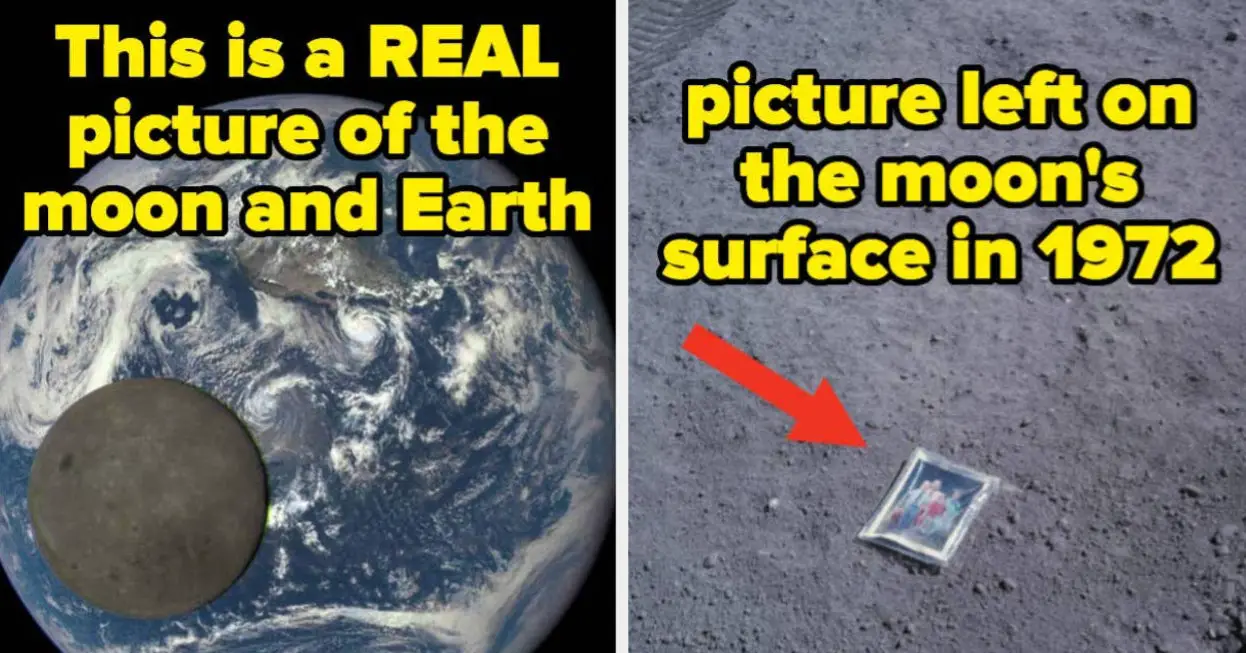Verdict
An 8K TV that delivers a superb picture performance for an LCD TV, the Samsung QN800D with the help of AI, looks outstanding with a range of content. Do consider a sound system to give audio a boost.
Pros
- Stunning picture performance
- Well-featured for gaming
- Improved performance with blooming
- Slightly more accessible interface
- Impressive upscaling
Cons
- Sound system falters when stressed
- Still some blooming present
Key Features
- AI assistancePowered by Samsung’s NQ8 AI Gen2 Processor
- HDR supportHDR10, HLG, and HDR10+ Adaptive formats onboard
- 70W sound system4.2.2-channel audio with Samsung’s OTS+ tracking system
Introduction
It hasn’t been the best of times for 8K TVs. Models aren’t flying off the shelves, prices are still comparatively expensive, and content is thin on the ground.
The same problems have affected 8K since it arrived, but it hasn’t stopped Samsung from keeping the faith in the tech.
The QN800C that I tested back in 2023 was one of Samsung’s best TVs of that year. With the Korean electronics firm placing a greater emphasis on AI technology this time round, has Samsung given buyers a reason to splurge on the QN800D?
Design
- Infinity One design
- Ultra Wide Viewing Angle tech
- One Connect box
Samsung has largely stuck with the same design for its top-of-the-line 8K models and that continues with the QN800D. The panel is slim (a depth of 17.2mm), finished to a high standard, with perforated holes in the chassis that allow audio to be pushed out from the TV.
The stand is still heavy, adding a good 10kg to the weight, or you could choose to wall mount the screen as a) the rear panel is uniformly flat and b) this screen comes with the One Connect box that handles all the connections and inputs to the TV via one slim cable (you’ve got two lengths depending on how you set the TV up).
The One Connect can be integrated into the back of the stand, or you could decide to keep it concealed in your AV cabinet. Assembling the stand took me nearly ten minutes, Samsung has never been one for a quick assembly process nor has the weight of the stand been reduced to make the TV easier to move.
The slim depth of the screen does point to one weakness. There’s not much room for the internal speakers, which has an undesirable effect on the audio performance.
Operating System
- New smart hub
- Generally the same vibe as before
Samsung has given Tizen a refresh for 2024, with the main page consisting of three sections: For You, Live, and Apps.
The first features content that (apparently) has been personalised and tailored to your interests; though if you ask me, it doesn’t look tailored at all. Scroll to the bottom and you can manage your preferences and get more recommendations.
There’s a row of streaming apps (Samsung has every single one you could ask for), new and trending content, and while Freeview Play isn’t supported, all the UK catch-up and on-demand apps are available in their individual forms.
The Live tab features content from FAST channels such as Samsung TV Plus, Rakuten TV, CNN International, Pluto TV, and live streams from apps such as Discovery+ and Apple TV+ (as long as you subscribe to those apps). It also ropes in a TV Guide although this is only for FAST channels (as far as I can tell). Apps is where you’ll find all the video and music streaming apps in one place.
None of the tabs (or hubs) takes too long to scroll through, which keeps the interface responsive. I did have an issue with the first sample Samsung sent where Tizen was very laggy and kept rebooting itself. The second sample worked as expected, though towards the end of testing it would just reboot itself for no reason.
New for 2024 is the Daily+ section, which acts as a hub for smart connected devices, health apps, and workspace areas. If you have a compatible camera you can view security feeds through the TV. If you have smart lights you can control them through this apparatus too.
Despite the refit Samsung’s Tizen has received, it still doesn’t really know what to do with the ‘Connected Devices’ and the ‘Settings’ menus, which still feel as if they’re hidden in the side menu. You can bring up settings with the smart remote and offers suggestions for commonly used presets.
Features
- Upgraded AI processor
- Higher refresh rates
- Loses Google Assistant smarts
The QE65QN800D gets Samsung’s latest NQ8 AI Gen2 Processor, which brings AI related performance benefits for picture, motion processing and upscaling low quality content over the 2023 models.
HDR supports covers HLG, HDR10, and HDR10+ Adaptive / Gaming along with the Filmmaker mode preset. As usual, there’s no Dolby Vision.
Dolby Atmos does feature, the QN800D packs a 70W OTS+, 4.2.2 channel system that looks like the same spec as the one included in the QN800C. Q-Symphony is also available with compatible Samsung soundbars.
HDMI connectivity includes four HDMI 2.1 inputs with refresh rates up to 165Hz with PC units (120Hz with gaming consoles or 8K/60Hz). You’ve also got ALLM, VRR (AMD FreeSync Premium Pro) available across all the One Connect box’s inputs. While Samsung’s TVs aren’t certified for Nvidia G-Sync, it should work regardless.
I measured input lag at 9.7ms, and at 1080p/120Hz the QN800D registered 8ms – the latter was not as fast as I was expecting but then the TV is upscaling to 8K.
There are two levels of the Game Motion Plus mode that adds motion processing for smoother visuals and in this mode the TV registered 16 and 27.2ms.
More gaming features are supported in the Super Ultra Wide Game View which adopts a widescreen presentation not too dissimilar to a gaming monitor, while the Mini Map Zoom allows you to increase the size of a map for greater visibility.
Other inputs and outputs include four USB ports (USB-C and three USB-A), Ethernet, digital optical out, CI Slot, and two RF inputs for terrestrial and satellite TV. Wirelessly there’s Wi-Fi 6E, AirPlay 2, and Bluetooth 5.3 streaming.
Smarts include Samsung’s Bixby voice assistant as well as Alexa integration, but Google Assistant only works through a connected speaker due to Google changing its policy. There is Samsung’s SmartThings app for integration with other smart devices in the home.
Multi View supports up to four mini-screens on the TV, and if you don’t like seeing a massive black screen when the TV is off, the Ambient+ mode adds pieces of art or your own pictures to blend in better with your décor.
Picture Quality
- Handles blooming better
- Still crushes colours in dark scenes
- Skintones can lack expression
When I first saw the QN800D at a preview event in Frankfurt, I left optimistic that Samsung had taken onboard criticisms of its 2023 range and refined its performance better – namely, the issue of blooming.
Blooming is where a halo of light or haze surrounds bright objects against a black background, and it was frequent the QN800C. The QN800D handles blooming much better. Watching the pumpkin turn into a carriage in Cinderella and the blooming is completely gone, the screen maintains strong black levels throughout the sequence without compromising on brightness whether in its Movie, Standard, or Vivid mode. The same is true in Soul where Joe first falls into The Great Beyond.
Trying some other movies and the deep black levels fall away a little with Civil War. There’s a little blooming towards the edges of the screen in an early hotel sequence, while a journey through a burning forest at night does introduce some haze around floating embers.
It’s with the Washington D.C. sequence where the Quantum Matrix Pro Mini LED backlight struggles the most. The bright light sources of buildings against a night sky and the QN800D squirms a little in managing light and dark areas. Some details get obscured, like the outline of a helicopter gunship flying through the sky – I can’t quite see it as it moves across the screen.
Nevertheless, black levels hold up well, and most blooming is restricted to off-axis viewing. Black crush doesn’t appear to be a problem, dark detail is very good for an LCD TV (though the Auto Power mode raises blacks a little) – this isn’t quite OLED performance but black levels are nice and deep.
And when combined with the Samsung QN800D’s high brightness the contrast is genuinely impressive. On a 5% HDR window I measured the QE65QN800D reaching 1052 nits in Standard mode, 1561 nits in Movie mode and 1658 nits in Dynamic mode. Highlights are impressively bright and precise, and the brightness feeds into its colour performance.
There’s great saturation, brightness, and variety in the colours the QN800D produces. Throughout Civil War there’s some striking use of colour and a scene where pink flowers appear looks stunning in terms colour volume and range, as does brightness and colour of greens, while whites are described with purity.
The Movie mode feels better balanced than previous generations, which I felt were just a little too strong though it still errs to a reddish hue at times. Even so, there’s a richness to the Samsung’s colour performance that doesn’t make me cry out for Dolby Vision.
Regardless of the picture mode, the 8K resolution creates a clean, sharp, and detailed image that even with 4K content is a step up over 4K TVs – sharp as a tack and revealing so much detail in the faces of actors or the textures of environments and clothing.
Images take on a three-dimensional look at times, the QN800D’s processing creates a sense of depth between foreground and background images.
The variety of colours is outstanding with Dune: Part Two with desert scenes featuring smooth and subtle gradations of colour as red, orange, and yellows all blend together seamlessly without striping or banding. At times, the Samsung QN800D’s picture looks flawless.
I felt the QN800C’s motion processing was pretty flawless, so it’s a little disappointing to report the QN800D doesn’t feel quite as consistently strong. The Auto mode features some judder and the Soap Opera Effect but it’s still a strong performance with edges well defined and noise minimised – it’s the stutter and lack of sharpness that makes me feel it’s a slight downgrade.
The Custom motion mode is excellent – I don’t feel there’s a need to change the settings: there’s no loss of sharpness, no SOE effect, judder or noise. The processing is seamless.
And the upscaling is phenomenally good for an 8K TV. Watching a Blu-ray of Speed Racer, and its rich and colourful palette almost looks as if it’s in HDR. Edges are defined well, there’s no noise I can spot. Detail levels – fine or otherwise – are as good as they can be. It’s a flat out fantastic performance whether it’s with HD Blu-rays or streaming.
With a DVD of Game of Thrones season three, there’s a clear drop in sharpness – objects in the background of scenes look fuzzy but they’re mostly free of any jagged edges, though with movement there’s a slight blurriness now and then. There’s good detail in period clothing considering the source but it’s the colour reproduction that steals the show. The gold cloaks of the King’s guard look great, day scenes are bright and colourful, night scenes are filled with contrast and feel atmospheric.
For an 8K TV, DVDs/SD sources are more of a technical exercise in upscaling, but the AI upscaling excels. DVDs on this TV look better than on some 4K TVs.
Sound Quality
- Lacks bass
- Big, expansive sound
High-end Samsung TVs rarely have good sound and it’s no different here. With the QN800D, the bass is flat and hollow, and that alone is reason enough to purchase a sound system.
Even in Amplify mode, the bass sounds tepid with a scene in Civil War at a camp where there’s no dialogue but score and ambient sounds creates distortion through the TV’s speaker system.
There’s good clarity of dialogue and the soundfield is expansive, the midrange is detailed, and the OTS+ system ably tracks multiple sounds across the screen at the same time. It sounds big and has depth too with a difference between foreground and background sounds.
Really, what the Samsung QN80D lacks is punch, dynamism, and loudness – even at volume 75 it isn’t particularly loud. And this screen doesn’t like loud, complex sequences – returning to the Washington D.C. scene from Civil War where it has to deal with loud, impactful sounds one after another and the TV sounds quieter.
The TV’s thin chassis doesn’t help in this regard, so while there are good aspects about its sound performance, it does feel subdued at times.
Latest deals
Should you buy it?
If you’re after a great picture performance
There’s still an argument that 8K hasn’t delivered on its potential, but Samsung have pivoted in making 4K, HD, and SD content better – and it looks great.
You’re still not convinced by 8K
The price is a barrier, and the lack of native content is problematic – the QN800D is a big outlay if the max resolution you’re watching is 4K.
Final Thoughts
The Samsung QE65QN800D produces an outstanding picture performance. The colour performance is sensational, the AI upscaling impresses, and black levels and high peak brightness feed into a three-dimensional image. If you weren’t a believer in what 8K TVs can do, the QN800D will make you one.
It’s not perfect though. Blooming is still apparent but managed well without becoming a distraction. The sound system can’t deal with loud and demanding scenes, and really warrants to be paired with one of the best soundbars.
The design is spectacularly minimalist (though making it lighter would be nice), the gaming features are thorough and the Tizen smart interface is a little friendlier than before.
Of course, all the complaints about even the best 8K TVs still stand, but in terms of the cutting edge of TV performance, the QN800D is a winner.
How we test
We test every television we review thoroughly over an extended period of time. We use industry standard tests to compare features properly. We’ll always tell you what we find. We never, ever, accept money to review a product.
Find out more about how we test in our ethics policy.
Tested over several weeks
Tested with real world use
Benchmarked with Spears and Munsil disc
Leo Bodnar input lag test
You might like…
FAQs
Does the Samsung QN800D support Dolby Vision HDR?
Currently, no Samsung TV supports Dolby Vision HDR.
Trusted Reviews test data
Full specs
UK RRP
Manufacturer
Screen Size
Size (Dimensions)
Size (Dimensions without stand)
Weight
ASIN
Operating System
Release Date
Resolution
HDR
Types of HDR
Refresh Rate TVs
Ports
HDMI (2.1)
Audio (Power output)
Connectivity
Display Technology
Samsung QE65QN800D
£3499
Samsung
64.5 inches
1443.7 x 267.9 x 898.2 MM
828.4 x 1443.7 x 17.2 MM
32.6 KG
B0CYBZDNGQ
Tizen
2024
7680 x 4320
Yes
HDR10, HLG, HDR10+ Adaptive, HDR10+ Gaming
48 – 165 Hz
Four HDMI 2.1 inputs, a headphone out, digital optical out, two RF aerials, Ethernet, three USB A inputs, USB-C CI+ slot
eARC, ALLM, VRR, HFR
70 W
Wi-Fi 6E, AirPlay 2, Bluetooth 5.3
Mini LED











